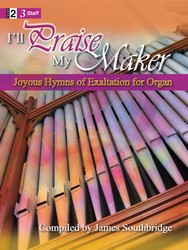- |
User Links
Firmes y adelante

Firmes y adelante
Translator: Juan Bautista Cabrera Ivars; Author: S. Baring-GouldTune: ST. GERTRUDE
Published in 38 hymnals
Printable scores: PDF, Noteworthy ComposerAudio files: MIDI
Representative Text
1 Firmes y adelante, huestes de la fe,
sin temor alguno, que Jesús nos ve.
Jefe soberano, Cristo al frente va,
y la regia enseña tremolando está.
Estribillo:
Firmes y adelante, huestes de la fe;
sin temor alguno, que Jesús nos ve.
2 Muévese potente la Iglesia de Dios,
de los ya gloriosos vamos hoy en pos:
somos sólo un cuerpo y uno es el Señor,
una la esperanza y uno nuestro amor. [Estribillo]
3 Tronos y coronas pueden perecer,
de Jesús la Iglesia siempre habrá de ser.
Nada en contra suya prevalecerá
porque la promesa nunca faltará. [Estribillo]
4 Pueblos, vuestras voces a la nuestra unid,
y el cantar de triunfo todos repetid;
prez, honor y gloria, dad a Cristo el Rey,
y por las edades cante así su grey. [Estribillo]
Source: El Himnario Presbiteriano #207
Translator: Juan Bautista Cabrera Ivars
 Juan Bautista Cabrera Ivars was born in Benisa, Spain, April 23, 1837. He attended seminary in Valencia, studying Hebrew and Greek, and was ordained as a priest. He fled to Gibraltar in 1863 due to religious persecution where he abandoned Catholicism. He worked as a teacher and as a translator. One of the works he translated was E.H. Brown's work on the thirty-nine articles of the Anglican Church, which was his introduction to Protestantism. He was a leader of a Spanish Reformed Church in Gibraltar. He continued as a leader in this church when he returned to Spain after the government of Isabel II fell, but continued to face legal difficulties. He then organized the Spanish Reformed Episcopal Church and was consecrated as bishop in 1894. He… Go to person page >
Juan Bautista Cabrera Ivars was born in Benisa, Spain, April 23, 1837. He attended seminary in Valencia, studying Hebrew and Greek, and was ordained as a priest. He fled to Gibraltar in 1863 due to religious persecution where he abandoned Catholicism. He worked as a teacher and as a translator. One of the works he translated was E.H. Brown's work on the thirty-nine articles of the Anglican Church, which was his introduction to Protestantism. He was a leader of a Spanish Reformed Church in Gibraltar. He continued as a leader in this church when he returned to Spain after the government of Isabel II fell, but continued to face legal difficulties. He then organized the Spanish Reformed Episcopal Church and was consecrated as bishop in 1894. He… Go to person page >Author: S. Baring-Gould
 Baring-Gould, Sabine, M.A., eldest son of Mr. Edward Baring-Gould, of Lew Trenchard, Devon, b. at Exeter, Jan. 28, 1834, and educated at Clare College, Cambridge, B.A. 1857, M.A. 1860. Taking Holy Orders in 1864, he held the curacy of Horbury, near Wakefield, until 1867, when he was preferred to the incumbency of Dalton, Yorks. In 1871 he became rector of East Mersea, Essex, and in 1881 rector of Lew Trenchard, Devon. His works are numerous, the most important of which are, Lives of the Saints, 15 vols., 1872-77; Curious Myths of the Middle Ages, 2 series, 1866-68; The Origin and Development of Religious Belief, 2 vols., 1869-1870; and various volumes of sermons. His hymns, original and translated, appeared in the Church Times; Hymns Ancien… Go to person page >
Baring-Gould, Sabine, M.A., eldest son of Mr. Edward Baring-Gould, of Lew Trenchard, Devon, b. at Exeter, Jan. 28, 1834, and educated at Clare College, Cambridge, B.A. 1857, M.A. 1860. Taking Holy Orders in 1864, he held the curacy of Horbury, near Wakefield, until 1867, when he was preferred to the incumbency of Dalton, Yorks. In 1871 he became rector of East Mersea, Essex, and in 1881 rector of Lew Trenchard, Devon. His works are numerous, the most important of which are, Lives of the Saints, 15 vols., 1872-77; Curious Myths of the Middle Ages, 2 series, 1866-68; The Origin and Development of Religious Belief, 2 vols., 1869-1870; and various volumes of sermons. His hymns, original and translated, appeared in the Church Times; Hymns Ancien… Go to person page >Text Information
| First Line: | Firmes y adelante |
| English Title: | Onward, Christian soldiers |
| Author: | S. Baring-Gould |
| Translator: | Juan Bautista Cabrera Ivars |
| Meter: | 6.5.6.5 D with refrain |
| Language: | Spanish |
| Copyright: | Public Domain |
Tune
ST. GERTRUDEThe popularity of this hymn is partly due to ST. GERTRUDE, the marching tune that Arthur S. Sullivan (PHH 46) composed for this text. The tune was published in the Musical Times of December 1871 in an advertisement for Joseph Barnby's (PHH 438) forthcoming Hymnary, which published both text and tune…


 My Starred Hymns
My Starred Hymns




